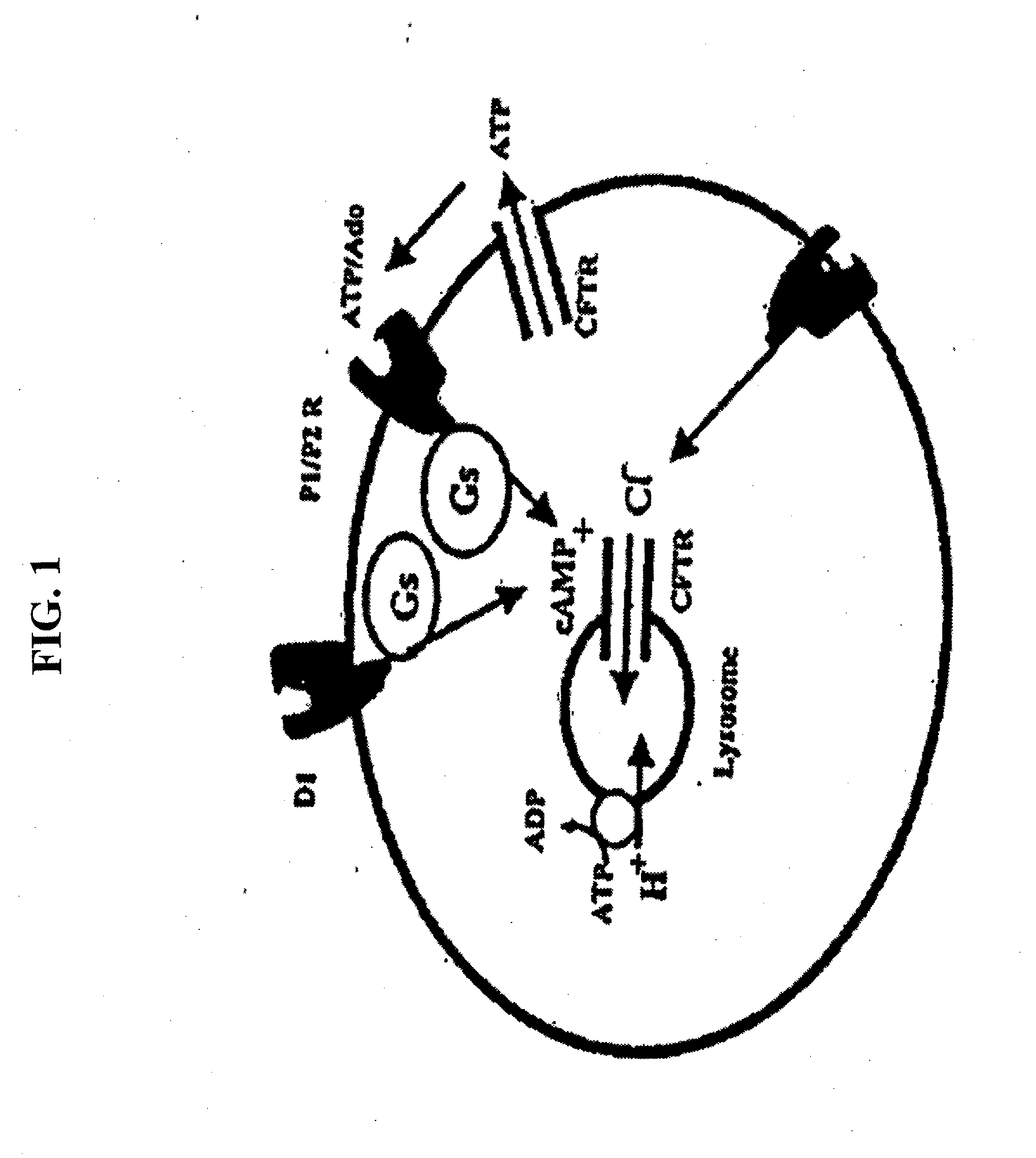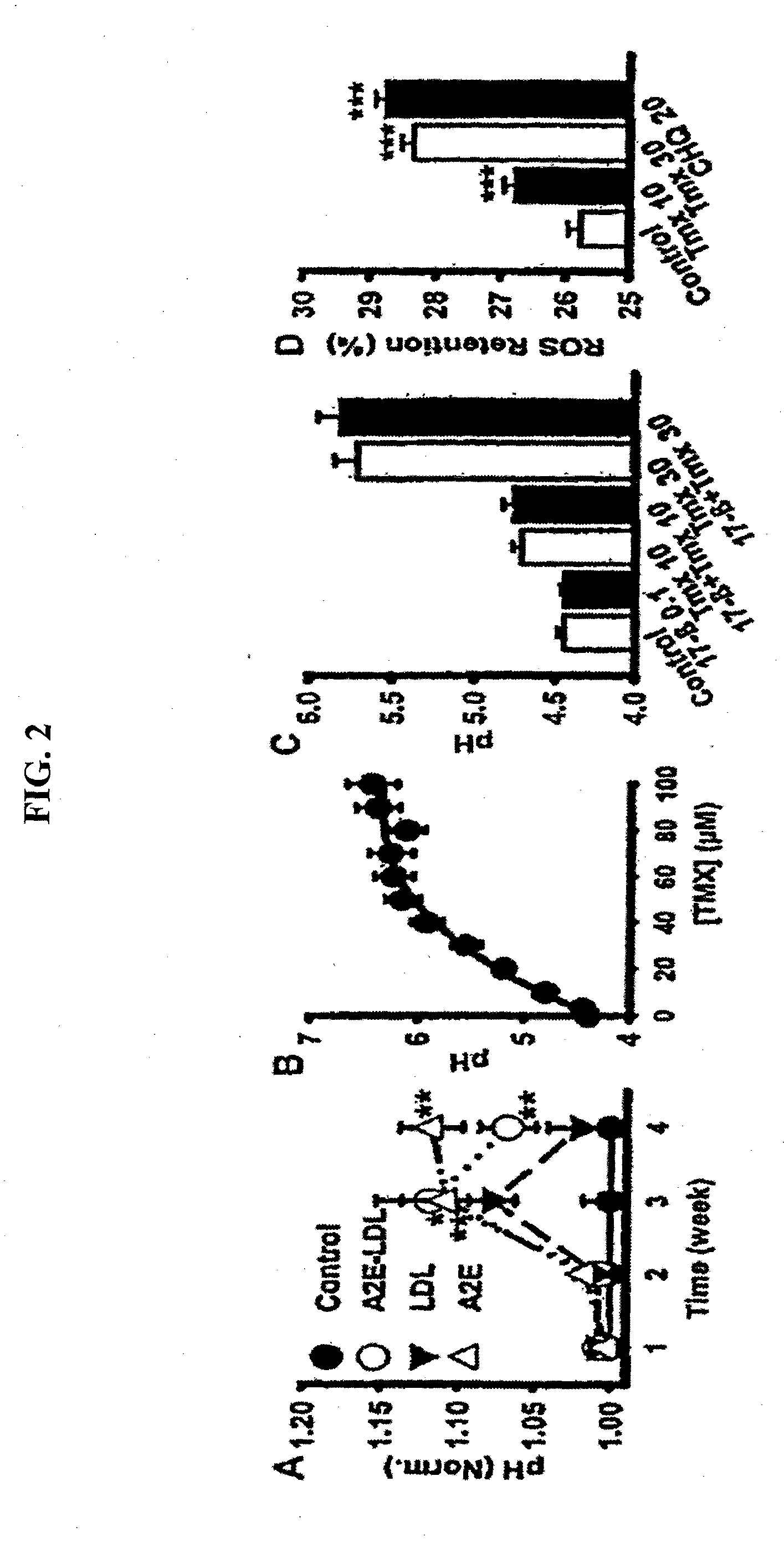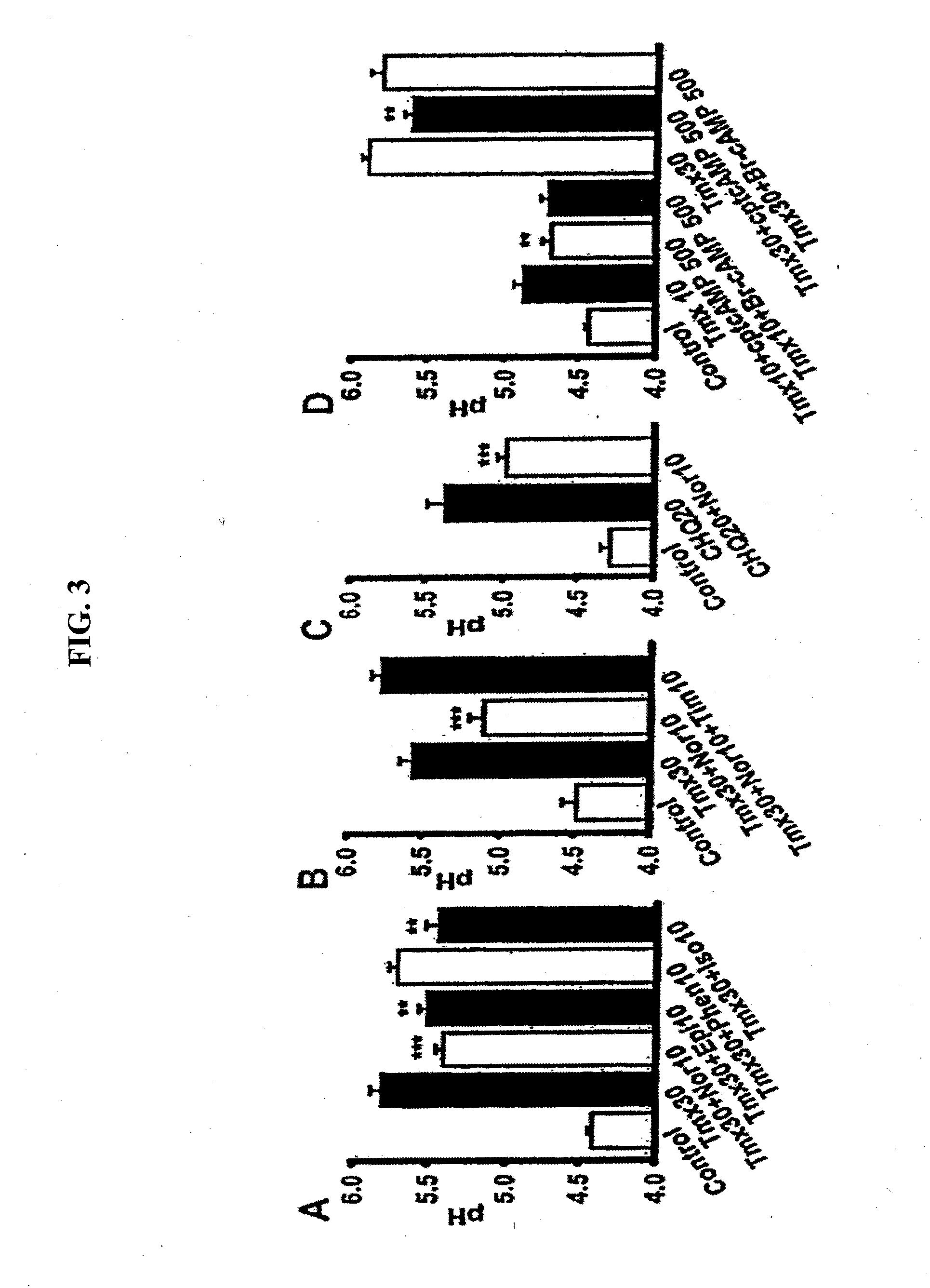Method for Mediating Dopamine Receptor-Driven Reacidification of Lysosomal pH
- Summary
- Abstract
- Description
- Claims
- Application Information
AI Technical Summary
Benefits of technology
Problems solved by technology
Method used
Image
Examples
example 1
Effect of Lysosomal Acidification on Clearance of Photoreceptor Outer Segments
[0103]To show that lowering pHL increased the clearance of outer segments, an approach was designed based upon the findings that tamoxifen and chloroquine slowed the clearance of outer segments. This also showed whether drugs capable of lowering lysosomal pH, also enhance clearance of outer segments. In addition, this experiment provided a second methodology to assess the effectiveness of the compounds identified above.
[0104]The primary lysosomal enzymes in RPE cells function optimally in acidic environments, and compounds that alkalize lysosomes can slow the degradation of outer segments and enhance accumulation of undigested material. Because this accumulation appeared to be a key step in the development and accumulation of lipofuscin, the ability of acidifying drugs to also restore rates of outer segment clearance was central to the potential of a drug.
[0105]Isolated bovine outer segments loaded with ca...
example 2
Restoration of Lysosomal Acidity in ABCA4− / − Mice
[0107]ABCA4− / − mice are missing the gene that is mutated in Stargardt's disease, and share many characteristics with the human form, including increased A2E. As shown in FIG. 4, ABCA4− / − mice had an increased ratio of dye at 340 / 380 nm, consistent with an increased lysosomal pH, showing that elevated pH occurs in an animal model of Stargardt's disease, representative of a human response, and supporting the concept that lowering pH has direct implications for treating this disease, and by extension, for treating macular degeneration in both the model animal and in humans.
[0108]Measurements of lysosomal pH from fresh mouse RPE cells: To verify the effectiveness of the ABCA4− / − model, the LysoSensor Yellow / Blue assay system was tested. LysoSensor Yellow / Blue dye was detected in freshly isolated mouse RPE cells, and first viewed as a brightfield image. The same field was exposed to fluorescence imaging, and excited at 360 nm (em:510 nm). ...
example 3
Restoring Lysosomal pH
[0112]Having previously determined the damaging effect of age-increased pH in RPE cells, specifically in the effect on the ability of the lysosomes to clear spent photoreceptor outer segments and lipofuscin, this experiment focused on how to restore optimal acidic pH to the affected lysosomes in the RPE, and to the identification of drugs or compounds that can achieve that effect and also prevent or restore the damage caused by the increased pH. Further this experiment evaluated the effect of D Nike dopamine receptors and D1-like dopamine receptor agonists, which led to the discovery that the D1-like agonists represent a likely target. This is particularly relevant since the D1-like agonists are also currently being developed to treat Parkinson's disease.
[0113]Initially, the magnitude of the damage to lysosomes in RPE cells from the ABCA4− / − mouse model of Stargardt's disease was evaluated. In 6 trials of in RPE cells from ABCA4− / − mice (26 mice aged 216±28 day...
PUM
| Property | Measurement | Unit |
|---|---|---|
| Time | aaaaa | aaaaa |
| Acidity | aaaaa | aaaaa |
Abstract
Description
Claims
Application Information
 Login to View More
Login to View More - R&D
- Intellectual Property
- Life Sciences
- Materials
- Tech Scout
- Unparalleled Data Quality
- Higher Quality Content
- 60% Fewer Hallucinations
Browse by: Latest US Patents, China's latest patents, Technical Efficacy Thesaurus, Application Domain, Technology Topic, Popular Technical Reports.
© 2025 PatSnap. All rights reserved.Legal|Privacy policy|Modern Slavery Act Transparency Statement|Sitemap|About US| Contact US: help@patsnap.com



